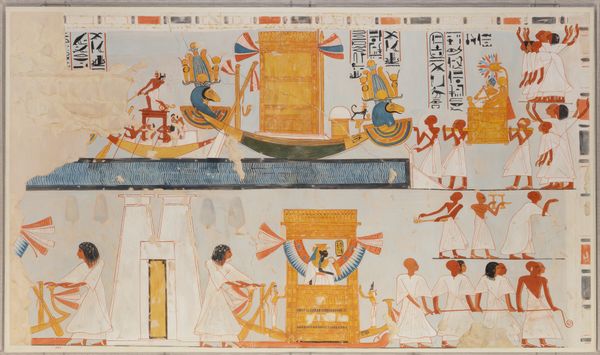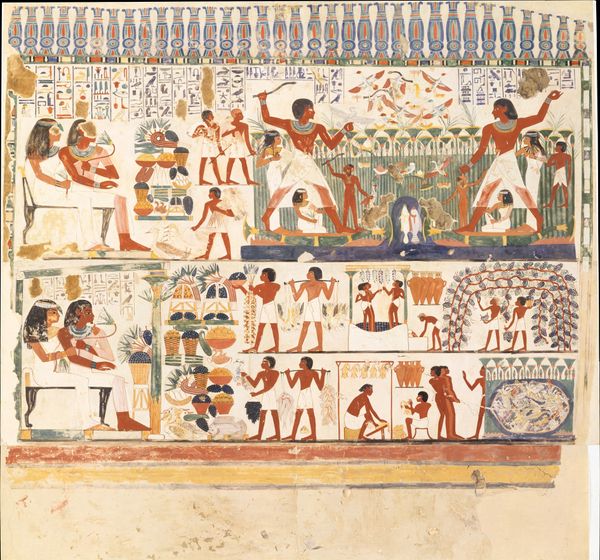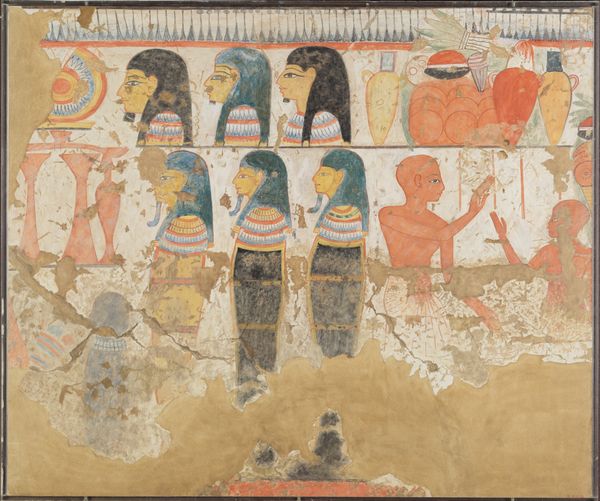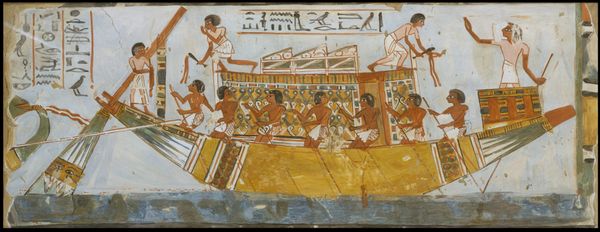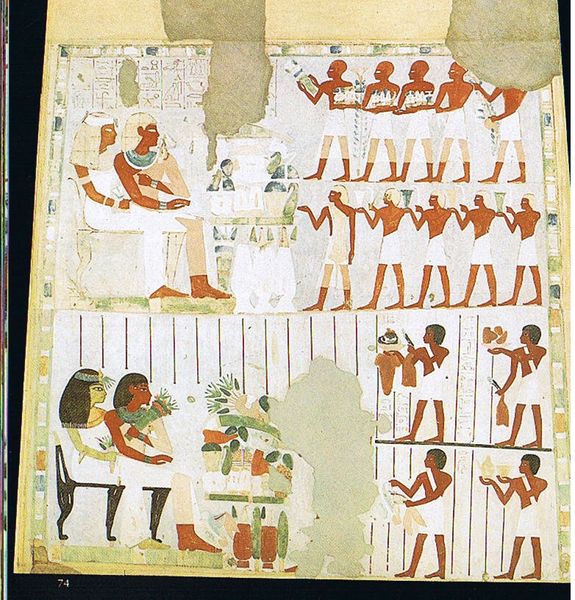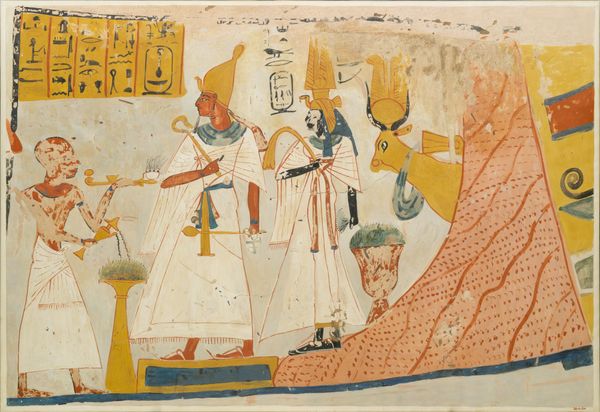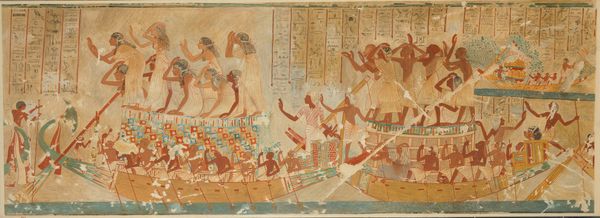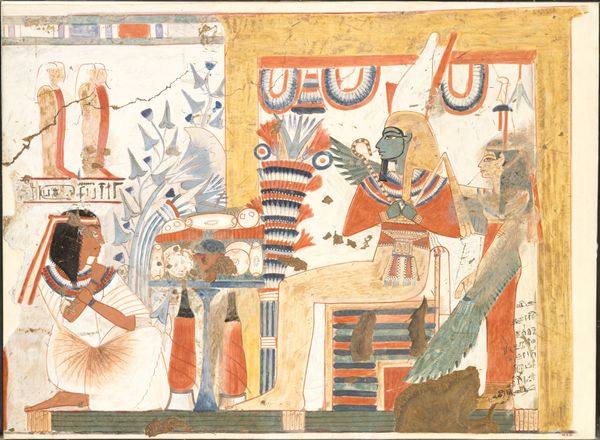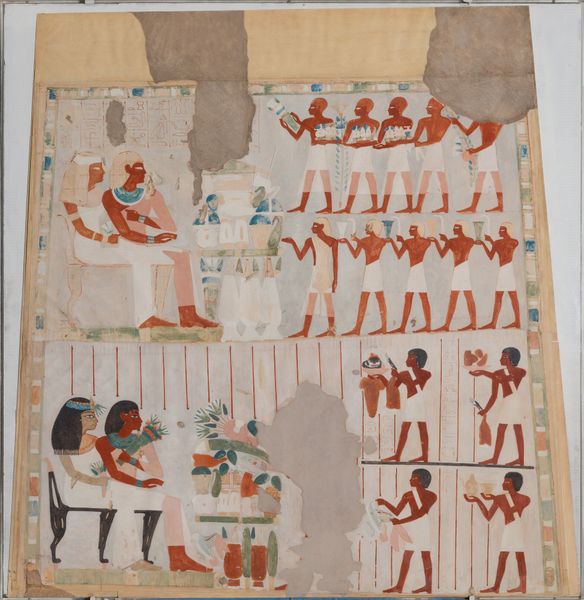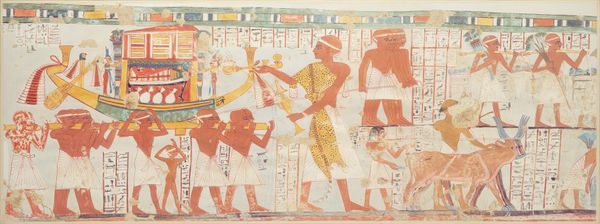
Userhat Adoring Deities of the West, Tomb of Userhat 1294 BC
0:00
0:00
painting, watercolor, mural
#
water colours
#
painting
#
ancient-egyptian-art
#
figuration
#
watercolor
#
egypt
#
ancient-mediterranean
#
wall painting
#
history-painting
#
mural
Dimensions: Facsimile h. 68 cm (26 3/4 in.); w. 94.5 cm (37 3/16 in.) scale 1:1 Framed h. 69.2 cm (27 1/4 in.); w. 90.5 cm (35 5/8 in.)
Copyright: Public Domain
Curator: Here we have a wall painting discovered in the Tomb of Userhat, dating back to around 1294 BC. The piece, currently housed in the Metropolitan Museum of Art, depicts Userhat Adoring Deities of the West. Editor: My first impression is how well-preserved the colours are, despite its age. The mural evokes a sense of solemnity and reverence with its stylized figures and ordered composition. Curator: Indeed, the visual style is highly characteristic of Egyptian art of that period, with its flattened perspective and symbolic imagery. It served a clear socio-political role, reinforcing the power and authority of both the deceased and the religious order. Editor: I’m particularly interested in the material production; the careful application of water colours on the plastered wall. We should note that such murals were the products of skilled labourers. It bridges fine art and what some might call 'craft.' Curator: Absolutely, and considering the tomb's function, the piece offers invaluable insights into ancient Egyptian religious beliefs and funerary practices. The precise details regarding posture, clothing, and divine representation all contribute to a sophisticated visual vocabulary. Editor: Right, there's this connection between labor, ritual, and artistic creation, revealing much about their beliefs and values. It makes you wonder about the hands that mixed these pigments and their place within society. Curator: It definitely shows us how deeply ingrained these artistic conventions were in their culture, forming an integral part of their religious expression. Editor: Well, it also highlights that beyond symbolism, it's about human labor, about the hands that brought it to life through simple materials and incredible knowledge. Curator: I agree; looking at it today prompts us to consider how imagery and religious power come together in these tombs. Editor: It seems both are equally relevant, so it leaves me with the feeling of the real presence of materiality in our current encounter with this long ago reality.
Comments
No comments
Be the first to comment and join the conversation on the ultimate creative platform.

